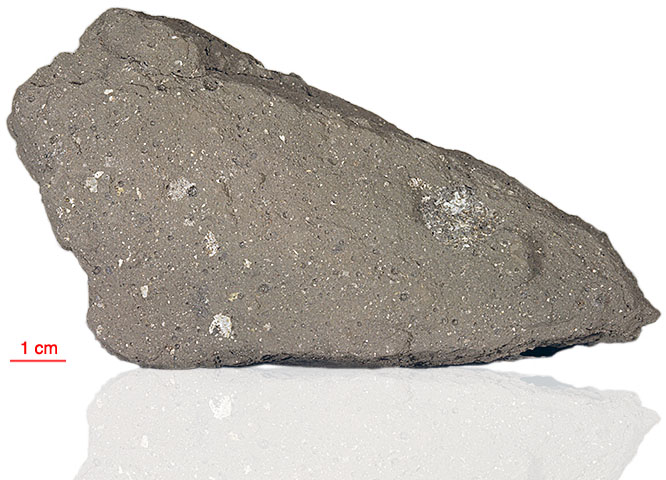
Fact sheet
70295 contains about 56 % matrix, with about 6 % mare basalt clasts (rotation 1). It also contains 10 % glass with recognizable agglutinates. The groundmass has a seriate grain size distribution. There is an abundance of orange glass of presumed volcanic origin. Clasts of mare, KREEP and feldspathic basalts have been described along with highland plutonic and granulitic clasts (rotation 2).
The sample weighed 361.2 grams before analysis and has not been dated.
Further details of this and other Apollo samples are here: http://curator.jsc.nasa.gov/lunar/
Apollo 17, the final manned landing mission, had two objectives: to obtain samples of ancient rocks from the lunar highlands and to look for evidence of younger volcanic activity on the valley floor.
This small Collection contains material deriving from both periods, including igneous rocks around 4.3 billion years old from the lunar highlands as well as younger volcanic samples dating from about 3.6 billion years ago.
Apollo 17 was launched on 7 December 1972.






